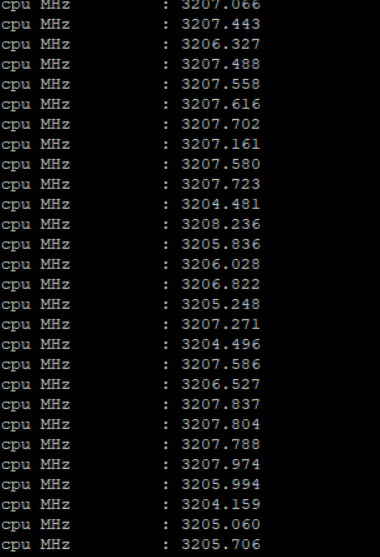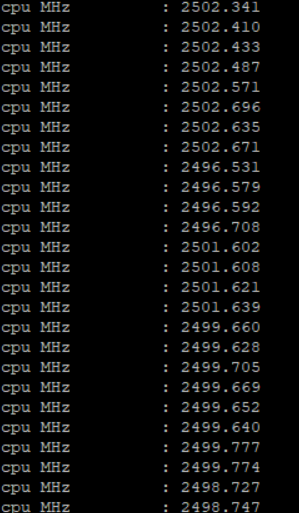AMD Rome Second Generation EPYC Review: 2x 64-core Benchmarked
by Johan De Gelas on August 7, 2019 7:00 PM ESTMulti-core SPEC CPU2006
For the record, we do not believe that the SPEC CPU "Rate" metric has much value for estimating server CPU performance. Most applications do not run lots of completely separate processes in parallel; there is at least some interaction between the threads. But since the benchmark below caused so much discussion, we wanted to satisfy the curiosity of our readers.
| 2P SPEC CPU2006 Estimates | ||||||
| Subtest | Xeon 8176 |
EPYC 7601 |
EPYC 7742 |
EPYC 7742 |
Zen2 vs Zen1 |
EPYC 7742 Vs Xeon |
| Cores | 56C | 64C | 128C | |||
| Frequency | 2.8 G | 2.7G | 2.5-3.2G | 2.5-3.2G | ||
| GCC | 7.4 | 7.4 | 7.4 | 8.3 | 7.4 | 7.4 |
| 400.perlbench | 1980 | 2020 | 4680 | 4820 | +132% | +136% |
| 401.bzip2 | 1120 | 1280 | 3220 | 3250 | +152% | +188% |
| 403.gcc | 1300 | 1400 | 3540 | 3540 | +153% | +172% |
| 429.mcf | 927 | 837 | 1540 | 1540 | +84% | +66% |
| 445.gobmk | 1500 | 1780 | 4160 | 4170 | +134% | +177% |
| 456.hmmer | 1580 | 1700 | 3320 | 6480 | +95% | +110% |
| 458.sjeng | 1570 | 1820 | 3860 | 3900 | +112% | +146% |
| 462.libquantum | 870 | 1060 | 1180 | 1180 | +11% | +36% |
| 464.h264ref | 2670 | 2680 | 6400 | 6400 | +139% | +140% |
| 471.omnetpp | 756 | 705 (*) | 1520 | 1510 | +116% | +101% |
| 473.astar | 976 | 1080 | 1550 | 1550 | +44% | +59% |
| 483.xalancbmk | 1310 | 1240 | 2870 | 2870 | +131% | +119% |
We repeat: the SPECint rate test is likely unrealistic. If you start up 112 to 256 instances, you create a massive bandwidth bottleneck, no synchronization is going on and there is a consistent CPU load of 100%, all of which is very unrealistic in most integer applications.
The SPECint rate estimate results emphasizes all the strengths of the new EPYC CPU: more cores, much higher bandwidth. And at the time it ignores one of smaller disadvantages: higher intercore latency. So this is really the ideal case for the EPYC processors.
Nevertheless, even if we take into account that AMD has an 45% memory bandwidth advantage and that Intel latest chip (8280) offers about 7 to 8% better performance, this is amazing. The SPECint rate numbers of the EPYC 7742 are - on average - simply twice as high as those of the best available socketed Intel Xeons.
Interestingly, we saw that most rate benchmarks ran at P1 clock or the highest p-state minus one. For example, this is what we saw when running libquantum:
While some benchmarks like h264ref were running at lower clocks.
The current server does not allow us to do accurate power measuring but if the AMD EPYC 7742 can stay within the 225W TDP while running integer workloads at all cores at 3.2 GHz, that would be pretty amazing. Long story short: the new EPYC 7742 seems to be able to sustain higher clocks than comparable Intel models while running integer workloads on all cores.












180 Comments
View All Comments
Zoolook - Saturday, August 10, 2019 - link
It's been a pretty good investment for me, bought at 8$ two years ago, seems like I'll keep it for a while longer.CheapSushi - Wednesday, August 7, 2019 - link
It's glorious...one might say.... even EPYC.abufrejoval - Wednesday, August 7, 2019 - link
Hard to believe a 64 core CPU can be had for the price of a used middle class car or the price of four GTX 2080ti.Of course once you add 2TB of RAM and as many PCIe 4 SSDs as those lanes will feed, it no longer feels that affordable.
There is a lot of clouds still running ancient Sandy/Ivy Bridge and Haswell CPUs: I guess replacing those will eat quite a lot of chips.
And to think that it's the very same 8-core part that powers the engire range: That stroke of simplicity and genius took so many years of planning ahead and staying on track during times when AMD was really not doing well. Almost makes you believe that corporations owned by share holders can actually sometimes actually execute a strategy, without Facebook type voting rights.
Raising my coffee mug in a salute!
schujj07 - Thursday, August 8, 2019 - link
Sandy Bridge maxed out at 8c/16t.Ivy Bridge maxed out at 15c/30t.
Haswell maxed out at 18c/36t.
That means that a single socket Epyc 64c/128t can give you more CPU cores than a quad socket Sandy Bridge (32c/64t) or Ivy Bridge (60c/120t) and only a few less cores that a quad socket Haswell (72c/144t).
Eris_Floralia - Wednesday, August 7, 2019 - link
This is what we've all been waiting for!Eris_Floralia - Wednesday, August 7, 2019 - link
Thank you for all the work!quorm - Wednesday, August 7, 2019 - link
Given the range of configurations and prices here, I don't see much room for threadripper. Maybe 16 - 32 cores with higher clock speeds? Really wondering what a new threadripper can bring to the table.willis936 - Wednesday, August 7, 2019 - link
A reduced feature set and lower prices, namely.quorm - Wednesday, August 7, 2019 - link
Reduced in what way, though? I'm assuming threadripper will be 4 chiplets, 64 pcie lanes, single socket only. All ryzen support ecc.So, what can it offer? At 32 cores, 8 channel memory becomes useful for a lot of workloads. Seems like a lot of professionals would just choose epyc this time. On the other end, I don't think any gamers need more than a 3900x/3950x. Is threadripper just going to be for bragging rights?
quorm - Wednesday, August 7, 2019 - link
Sorry, forgot to add, 3950x is $750, epyc 7302p is $825. Where is threadripper going to fit?